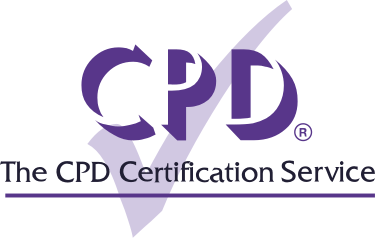When you go online, or use an app on your phone, what makes you return to it? If a website is slow, its graphics look dated, or it’s too complicated to use, you may not return to that site. In this CPD article, we look at what UX is and why knowledge of UX Design is beneficial, no matter what industry you work in.
Understanding UX need not be complicated. UX stands for ‘User Experience’. Professor Donald Norman, who coined the term, said ‘User experience’ encompasses all aspects of the end-user's interaction with the company, its services, and its products’. In other words, the full customer experience.
If you can navigate, find what you want and the design is aesthetically pleasing, you’ve had a positive ‘User Experience’. A positive ‘User Experience’ is vital for websites and apps to retain users and to attract new ones.
What is UX?
UX Design is a process used to design a product that will provide users with positive interactions. It must also ensure that interactions are relevant and logical, making it easy for a user to navigate the product, app or website, even if they’ve never visited before.
While we often think of UX as a digital only consideration, the principles can be applied to both digital and physical products. If a product you use doesn’t function as it should, or it is difficult to use, a user is more likely to consider a competitor’s product. This is why good UX Design is vital in today’s business world and knowledge of UX Design is sought after across all industries.
What’s the difference between UI and UX?
While UX stands for User Experience, UI stands for User Interface. UX and UI are often spoke about together but they are not the same thing. If a company or brand uses certain colours and typography, a UI designer will ensure that these are then used on their website or app.
An example of this would be a supermarket chain. In store, the retailer will use a colour and font. Along with their logo, this makes their product recognizable in person. If you go to their website or mobile app for online shopping, the colours, fonts and logos will match their in store branding.
Both UX and UI designers will work together in a team with a Project Manager or Engineer and both are vital parts of an overall project. While there is some overlap in the roles, there are some differences. UX Design is thought of as ‘human first’, the interaction the user has with the functions of the product. It ensures that menus are logical and that all information is in a hierarchical from, making navigation easy. Good UX Design makes everything seem easy.
UI Design is more focused on the aesthetics of the project, ensuring typography and colours are suitable and easy to read, that transitioning from one part of the app to another is smooth and animations, icons, search functions etc., are all aesthetically pleasing. UX Designers create wireframes and prototypes that will form the basis of a website or app, for example. These are the building blocks of a user’s journey and UX Designers ensure that these flow seamlessly. UI Designers will finalize the look of the product to boost user engagement, ensuring all parts are consistent, polished and match company branding guidelines.















